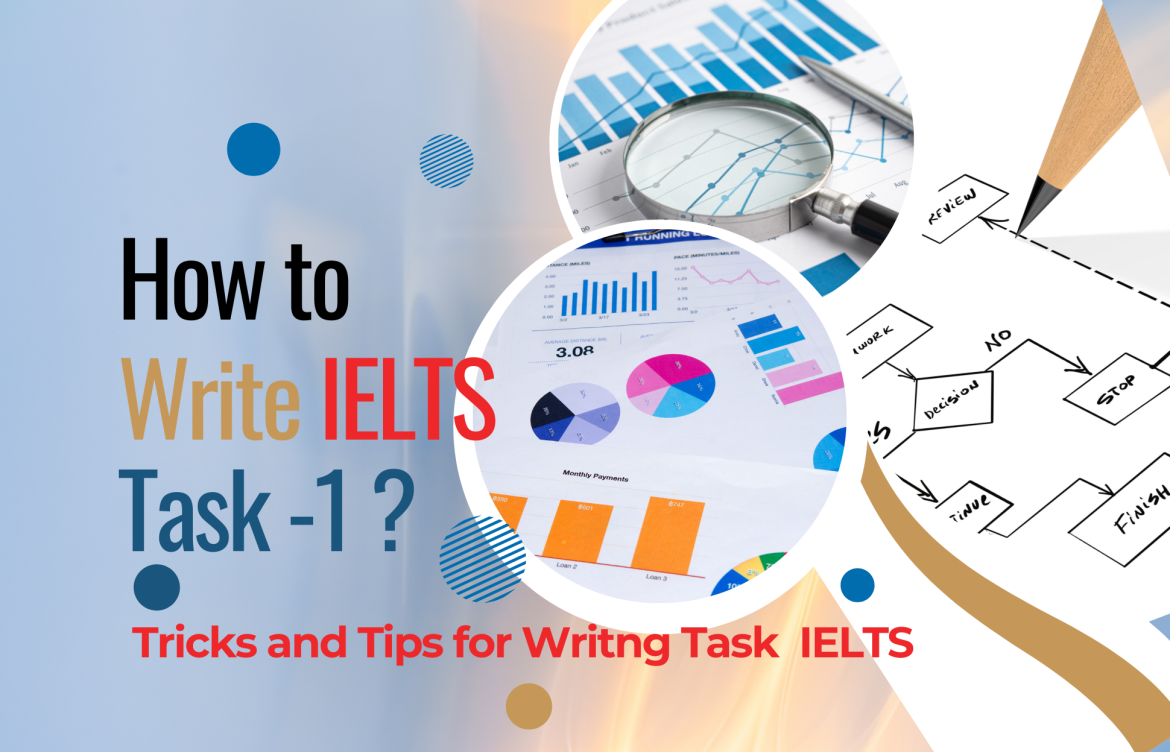The IELTS Writing Task 1 is a vital component of the IELTS exam, where you are asked to describe visual data or processes. The task evaluates your ability to interpret and summarize information clearly and coherently. Here’s a complete guide on how to excel in IELTS Writing Task 1.
Guidelines: What Are Examiners Looking For?
Examiners assess your response based on four main criteria:
- Task Achievement (25% of your score): How well you fulfill the task by summarizing, comparing, and highlighting key trends, differences, or stages. Stick to the requirements of the task and avoid giving unnecessary details or opinions.
- Coherence and Cohesion (25%): The logical flow of information. Your ideas should be organized with clear paragraphs, and the use of linking words should make the writing smooth and easy to follow.
- Lexical Resource (25%): Your vocabulary. This includes using a variety of words accurately, avoiding repetition, and using less common vocabulary relevant to the chart or process description.
- Grammatical Range and Accuracy (25%): The range of sentence structures you use (e.g., simple, compound, and complex sentences), and your ability to use grammar correctly.
Each of these criteria contributes equally to your final band score for Task 1.
Different Types of Charts
IELTS Writing Task 1 can feature various types of charts and visual representations, including:
- Bar Charts: Visualizing data through rectangular bars of varying heights.
- Line Graphs: Showing trends over time.
- Pie Charts: Illustrating proportions or percentages.
- Tables: Presenting data in rows and columns.
- Process Diagrams: Explaining how something works or the steps involved in a process.
- Maps: Showing changes over time or comparing locations.
Understanding how to describe each chart accurately is key to scoring well.
How to Plan the Task
Planning is essential for a coherent and well-structured response. Follow these steps:
- Understand the Visual: Spend 2-3 minutes analyzing the chart or diagram. Identify the key features and trends.
- Plan Your Overview: Highlight the most important features of the chart, such as trends, similarities, or significant changes.
- Organize the Information: Divide the data into two to three categories, so you can structure your body paragraphs logically.
- Allocate Time: Spend 3-4 minutes planning, 15 minutes writing, and the last 2 minutes checking for mistakes.
Structure for IELTS Writing Task 1
A clear structure is crucial. Stick to the following format:
- Introduction (1-2 sentences): Paraphrase the question. State what the visual represents.
Example: The bar chart compares the population growth in five different countries over a 20-year period.
- Overview (2-3 sentences): Summarize the main trends or patterns without going into too much detail.
Example: Overall, the population of Country A experienced the most significant increase, while Country C saw a steady decline.
- Body Paragraph 1 (4-5 sentences): Focus on the first main feature or trend. Provide specific data points and comparisons.
- Body Paragraph 2 (4-5 sentences): Focus on the second main feature or trend. Again, back up your statements with data.
Make sure the body paragraphs have a logical flow and are easy to follow.
What to Take Care of While Planning?
- Identify Key Features: Look for significant changes, trends, or similarities in the data.
- Group Data Logically: Don’t list every detail; instead, organize your response by grouping related data.
- Time Management: Don’t spend too long planning—focus on understanding the chart and identifying key points.
What to Take Care of While Writing?
- Paraphrasing: Avoid repeating the words used in the task prompt. Use synonyms or rephrase sentences to demonstrate lexical range.
- Data Accuracy: Ensure you report the data correctly. A misreported figure can affect your Task Achievement score.
- Avoid Opinions: The task requires objective reporting, not personal opinions.
- Vary Sentence Structures: Use a mix of simple, compound, and complex sentences to showcase grammatical range.
Overview Tips for IELTS Writing Task 1
- Keep it Brief: Your overview should highlight the most significant trends or features in 2-3 sentences.
- Avoid Numbers: Do not include specific data in the overview. Focus on summarizing the general trends.
- Use Comparing Language: Words like “while,” “whereas,” “similar,” and “compared to” are useful when contrasting different parts of the data.
IELTS Writing Task 1 requires practice, but with a solid understanding of the structure, planning, and criteria, you can excel. Focus on clear, coherent reporting, accurate data presentation, and varied sentence structures. Planning and writing carefully will help you meet the expectations of the examiners and secure a strong band score.
If you’re struggling to achieve a band score above 6.0 in your IELTS Writing, visit Best IELTS Coaching Class in Surat – Novasask Education for a demo writing class. Our expert IELTS coaching will help you improve your writing skills and guide you towards achieving your desired band score. Join our IELTS classes today and move closer to your success!







